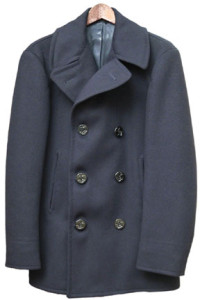New York Criminal Court Judge Felicia Mennin has dismissed a criminal complaint charging Loitering for the Purpose of Engaging in a Prostitution Offense (NY Penal Code § 240.37[2]) for facial insufficiency in her opinion in People of State of New York v. McGinnis  based in part on the failure of the officer’s description of the defendant’s attire to be meaningful.
based in part on the failure of the officer’s description of the defendant’s attire to be meaningful.
The criminal complaint alleged, that the officer observed “defendant wearing BLACK PEA COAT, SKINNY JEANS AND PLATFORM SHOES, which were revealing in that OUTLINE OF DEFENDANT’S LEGS [sic].”
Here’s Judge Mennin on the sufficiency of the officer’s statements:
The informant’s emphasis on the defendant’s clothing as a tell-tale sign that she was marketing herself commercially is astonishing. The defendant is alleged to have been wearing a black peacoat, skinny jeans which revealed the outline of her legs and platform shoes. This information was again supplied in the supporting deposition in response to a request to ”fill in the blank.“ Any current issue of a fashion magazine would display plenty of women similarly dressed. However, the choice of such outfit hardly demonstrates the wearer’s proclivity to engage in prostitution. Indeed, the complaint’s characterization of the jeans as ”revealing“ because they ”outlined the defendant’s legs“ seems more to be expected in the dress code of a 1950’s high school than a criminal court pleading.
That there is some type of dress that might be more probative of a willingness to engage in prostitution is also discussed by Judge Mennin, with reference to the cases cited by the State:
The defendant’s clothing in this case stands in stark contrast to the clothing relied upon as circumstantial proof of loitering for purposes of prostitution in the cases cited by the People. For instance, in Byrd, the defendant’s clothing exposed her buttocks. In Jones, the defendant was allegedly dressed in a skirt and a black bra with no other covering on her upper body. In Farra S., the defendant was wearing a shirt, the cut of which revealed the sides of her breasts. In Koss, one defendant was dressed in a black leopard two-piece bathing suit and high heels. In such instances, reliance upon attire as a factor appears more reasoned.
As a footnote to this passage, Judge Mennin addressed the implicit claim that a peacoat might be more provocative during the winter:
Granted, this incident occurred in the middle of winter. However, a ”pea coat“ is still standard issue to members of the U.S. Navy and models of such coats are made and sold routinely to men, women and children, and blue jeans, skin-tight or baggy, are practically an American icon. Accordingly, it is difficult to imagine what, if any, significance at all the defendant’s clothing might have in this case, either individually, or taken collectively with other meaningful circumstances, as any indicia of a link to prostitution. It would appear that the officer was just tempted to ”fill in“ this blank of the supporting deposition because it was there.
Judge Mennin’s opinion, which has generated some media coverage, highlights the perfunctory nature of most criminal complaints as well as the tenuous link between attire and sex work. While her opinion does not hold that attire can never be circumstantial evidence of loitering for the purpose of prostitution, she certainly concludes that the attire must approach indecent exposure.
